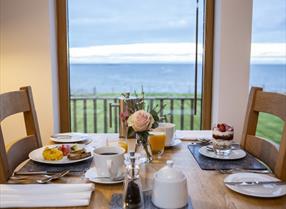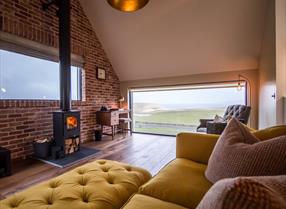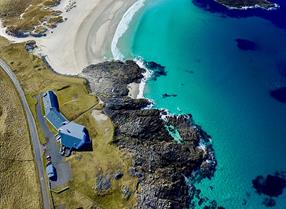Great Bernera
Great Bernera (Beàrnaraigh Mòr in Gaelic) is a beautiful island with a rich and varied history. It is the largest of many islands which lie in the waters of Loch Roag on the west side of Lewis and is eight square miles in size – approximately five miles long by three miles wide
The name ‘Bernera’ is derived from the Old Norse word for bear ‘bjarnar’ and would probably have been so named during the times of Viking settlement here.
The district of Great Bernera comprises of several villages. Those on the south side of the bridge are Earshader, Crulivig, Lundale and Linshader (known collectively as Tir Mor) and are part of the Grimersta Estate; while the villages of Hacklete, Breaclete, Barraglom, Kirkibost, Tobson, Bosta, Croir and Little Bernera make up the Great Bernera Estate. At its north end sits Little Bernera, a smaller island, also renowned for its stunning beaches, and rumoured to have been a favourite spot of the Queen of England.
The land of Bernera is divided into croft land, in-byes and common grazing which were once the bed rock of a thriving community of crofting and fishing townships. During its Hay Day, Bernera reached a population of over 600 residents. However, as with many parts of the Highlands and Islands, it witnessed extensive emigration periods, sometimes enforced by landlords and other times because of economic necessity. By 1951, the population had reduced to about 380, and today the number of residents living on Bernera sits at roundabout 260.
Back in the Day, keeping livestock and working the land and sea were a way of life and in some cases provided islanders with a good wage as records show that in 1827 alone, some 60,000 lobsters were sent to London from Bernera! Communities were close-knit and shared the workloads which meant their skills and traditions were passed on down through the generations. In these days, storytelling, song, dance and religion were very much part of community life.
Visible reminders of this bygone era can still be seen within the landscape in the forms of overgrown lazy beds; old peat embankments and shielings; stone dykes, lobster ponds, remnants of buildings used for curing fish, ruined chapels, a cairn to commemorate the Bernera land struggle, and a memorial to the men who lost their lives in the Great War. Delving further back into Bernera’s history, remains of a Norse mill, an Iron Age house, at Bosta, ancient Standing Stones and a ruined Dun show, how throughout history, Bernera attracted settlers from near and afar, making for an island rich in history, culture and heritage.
Today, although not as predominant as it once was, Gaelic remains the native language and still flourishes amongst many of the villagers.
Great Bernera has one of the most beautiful beaches in Lewis at Bosta and coupled with an Iron Age house, Bosta is a village well worth visiting.























